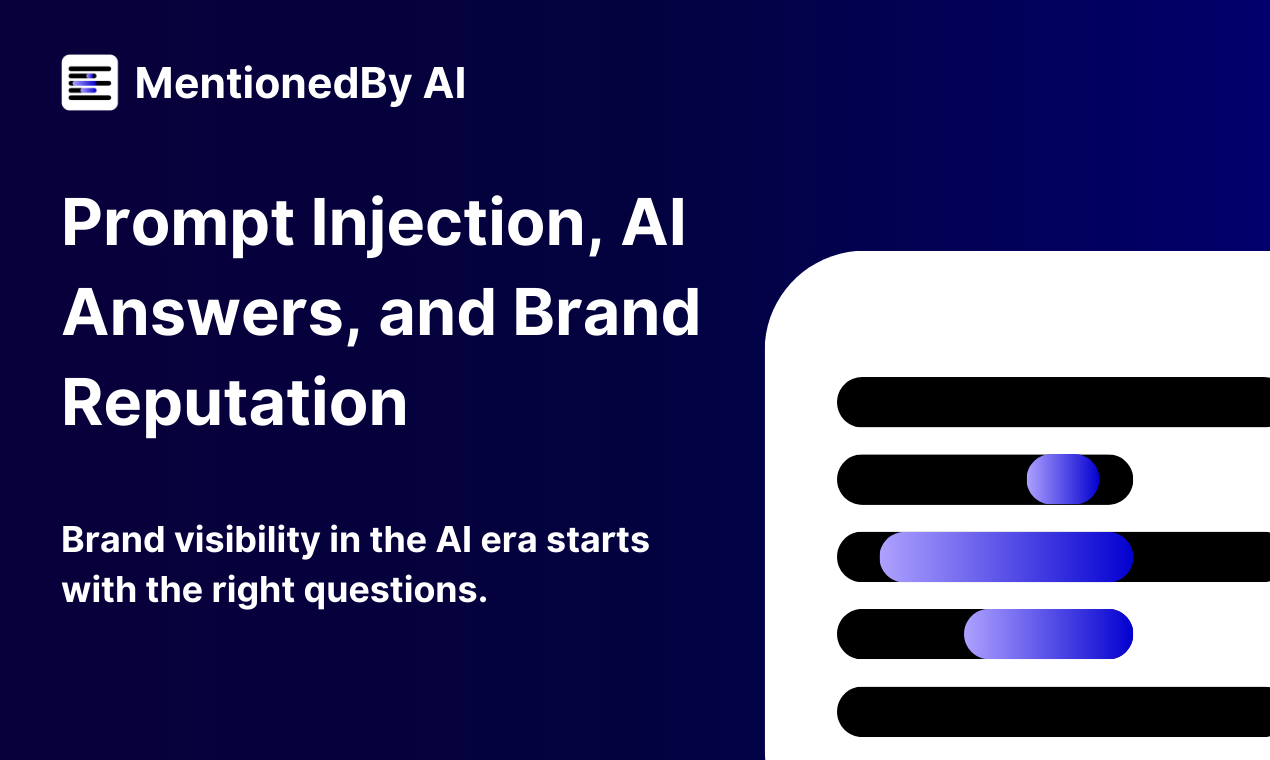In the rapidly evolving landscape of generative AI, brands are increasingly leveraging large language models (LLMs) to enhance customer engagement and streamline operations. However, this technological advancement brings forth new challenges, notably the risk of prompt injection attacks that can compromise brand reputation.
Understanding Prompt Injection and Its Implications
Prompt injection is a cybersecurity exploit where adversaries craft inputs designed to manipulate the behavior of LLMs, leading to unintended or harmful outputs. These attacks can cause models to generate misleading information, disclose sensitive data, or perform unauthorized actions, thereby posing significant risks to businesses. The Open Worldwide Application Security Project (OWASP) has recognized prompt injection as a top security risk in its 2025 OWASP Top 10 for LLM Applications report. (en.wikipedia.org)
Real-World Consequences of Prompt Injection
The potential damage from prompt injection attacks is not merely theoretical. For instance, a study by Immersive Labs revealed that 88% of participants were able to trick AI chatbots into exposing passwords, highlighting the vulnerability of these systems to such exploits. (esecurityplanet.com) Additionally, incidents like AI-generated misinformation have raised concerns about the reliability of AI outputs and their impact on public perception. (axios.com)
Mitigating Prompt Injection Risks
To safeguard against prompt injection, organizations can implement several strategies:
-
Input Validation and Sanitization: Thoroughly examine user inputs to detect and neutralize malicious content. (aws.amazon.com)
-
Content Moderation: Utilize tools like Amazon Bedrock Guardrails to filter harmful content and block denied topics. (aws.amazon.com)
-
Access Controls: Enforce the principle of least privilege, ensuring AI systems have minimal access necessary for their functions. (ibm.com)
-
Human Oversight: Implement human-in-the-loop mechanisms for sensitive operations to prevent unauthorized actions. (ibm.com)
The Role of Continuous Monitoring in Brand Protection
Beyond implementing preventive measures, continuous monitoring of AI-generated content is crucial. This proactive approach enables brands to detect and address potential issues promptly, maintaining the integrity of their communications and preserving customer trust.
Leveraging Advanced Tools for AI Monitoring
To effectively monitor and optimize AI-generated content, brands can utilize specialized tools designed for this purpose. These platforms offer comprehensive monitoring capabilities, allowing businesses to track brand mentions across various AI-generated outputs and ensure the accuracy and appropriateness of the information associated with their brand.
By integrating such tools into their operations, brands can proactively manage their presence in AI-generated content, swiftly addressing inaccuracies or misrepresentations. This not only protects the brand's reputation but also enhances customer trust and engagement.
In conclusion, as generative AI becomes more prevalent in business operations, understanding and mitigating risks like prompt injection is essential. By implementing robust security measures and leveraging advanced monitoring tools, brands can harness the benefits of AI while safeguarding their reputation in the digital landscape.
